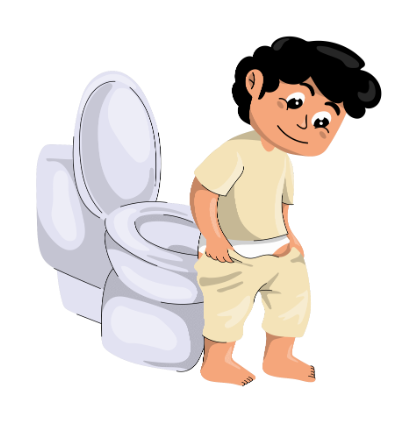
14 Aug Tiny Tushies, Big Wins: Toilet Training Tips from a Pelvic Floor Physio
Toilet training is one of those big milestones in your child’s life that can bring equal parts excitement and anxiety. As a pelvic floor physio, I’m here to help you navigate this journey with a touch of humor and a lot of practical advice. Let’s dive into the norms, debunk some myths, and learn how a little pelvic floor magic can make this process smoother. Plus, I’ll share some tips and tricks that will have your little one triumphantly waving goodbye to diapers in no time!
Norms and Myths
Toilet training typically starts between 18 months and 3 years of age, with most kids achieving daytime control by age 4 and nighttime control by age 5. But remember, every child is different, and there’s no need to rush. Here are some common myths and the realities behind them:
- Myth: All children should be toilet trained by age 2.
- Reality: Kids develop at their own pace. Some might be ready earlier, while others might take longer, and that’s perfectly okay. Think of it as potty karma – it happens when it’s meant to happen.
- Myth: Punishment is effective for toilet training.
- Reality: Positive reinforcement works wonders. Encouragement and praise build confidence and make the process more enjoyable. Plus, no one wants to be the potty police!
- Myth: Nighttime continence should happen at the same time as daytime training.
- Reality: Nighttime control can take longer. It’s normal for kids to have nighttime accidents for several years. Don’t worry; your child won’t need nighttime diapers forever. We promise!
Understanding Bowel and Bladder
Understanding how the bowel and bladder work is crucial for successful toilet training:
- Bladder: As children grow, their bladder capacity increases, allowing them to hold urine longer. Think of it as their internal tank growing larger. Assessing bladder function and learning strategies to improve control can be very helpful.
- Bowel: Regular bowel movements are essential. Constipation can cause discomfort and accidents, so a high-fiber diet and proper hydration are key. A happy tummy leads to a happy potty experience!
How Can a Pelvic Floor Physio Help?
Here’s how I can support you and your child:
- Assessment: I can evaluate your child’s readiness for toilet training and identify any underlying issues like constipation or bladder dysfunction. Think of me as your potty whisperer.
- Education: I’ll teach you and your child about how the bowel and bladder work. Knowledge is power, even in the bathroom!
- Exercises: I can provide pelvic floor exercises to strengthen the muscles involved in continence. Because even tiny tushies need strong muscles!
- Behavioral Strategies: Together, we’ll develop a customized toilet training plan with routines and reward systems. Let’s make potty time a fun time!
Tips and Tricks for Toilet Training
Here are some practical tips to make toilet training smoother:
- Create a Routine: Establish regular times for sitting on the toilet, such as after meals and before bedtime. Routine makes everything run like clockwork – even potty time.
- Positive Reinforcement: Use praise and small rewards to encourage successful toilet use. Stickers, anyone?
- Comfortable Environment: Make the toilet area child-friendly with a step stool and a comfortable potty seat. A throne fit for a tiny tushie!
- Hydration and Diet: Encourage a balanced diet with plenty of fluids and fiber to promote regular bowel movements. Remember, happy tummies make for happy tushies.
- Patience and Consistency: Be patient and consistent, understanding that setbacks are normal. Rome wasn’t built in a day, and neither are potty habits.
Helpful Apps and Books
To support you further, here are some apps and books that can be very helpful:
Apps:
- Potty Whiz: A user-friendly app to track toilet training progress and set reminders. Because every tiny tushie needs a sidekick!
- My Kiddy Potty: Provides interactive games and rewards to make toilet training fun. Turn potty time into playtime!
Books:
- “Oh Crap! Potty Training” by Jamie Glowacki: A practical and parent-friendly guide. It’s like a potty training manual for the modern parent.
- “Potty” by Leslie Patricelli: A delightful board book that introduces toilet training to young children. Because even tiny tushies love a good story.
Toilet training is a journey, and with the right support and resources, it can be a positive experience for both you and your child. If you have any questions or need personalized advice, feel free to reach out. We’re here to help you turn those tiny tushies into big wins!
Resources:
- My Kiddy Potty App
- Oh Crap! Potty Training by Jamie Glowacki
- Potty by Leslie Patricelli

Sorry, the comment form is closed at this time.